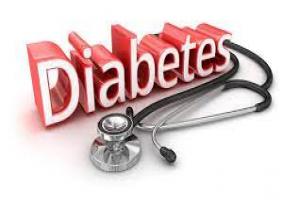Diabetes mellitus is a clinical syndrome characterized by an increase in plasma blood glucose(hyperglycaemia)
In ayurveda- Diabetes is named madhumeha/prameha in Ayurveda. Diabetes in Ayurveda is literally translated as “sweet urine†because “Madhu†means sweet and “Meha†means urine.
It is a chronic metabolic condition in which the body is unable to adequately utilize glucose, resulting in hyperglycemia and sugar in the urine.
Types-type-1,type-2
Type-1 autoimmune destruction of insulin producing cells(beta cells) in the pancreas,leading to marked insulin deficiency.
It was once better known as juvenile diabetes. Type 1 diabetes need to take insulin every day. This is why it is also called insulin-dependent diabetes.
Type-2 -reduced sensitivity to the action of insulin and an inability to produce sufficient insulin to overcome this insuin resistance.
This is the most common type of diabetes.
Insulin is a hormone made by your pancreas. pancreas releases insulin into bloodstream. Insulin acts as the “key†that unlocks the cell wall “door,†which allows glucose to enter your body’s cells. Glucose provides the “fuel†or energy tissues and organs need to properly function.
According to Ayurveda, primary causes of diabetes-
• Being physically inactive
• Eating too much sweet food
• Eating too many foods that cause an increase in Kapha
• Excessive use of curds
• Excessive sleep, including sleeping during the daytime
Symptoms of diabetes include-
• Increased thirst.
• Weak, tired feeling.
• Blurred vision.
• Numbness or tingling in the hands or feet.
• Slow-healing sores or cuts.
• Unplanned weight loss.
• Frequent urination.
• Frequent unexplained infections.
• Dry mouth.
Other symptoms
• In women- Dry and itchy skin, and frequent yeast infections or urinary tract infections.
• In men- Decreased sex drive, erectile dysfunction, decreased muscle strength.
Type 1 diabetes symptoms Symptoms can develop quickly – over a few weeks or months. Symptoms begin when young – as a child, teen or young adult. Additional symptoms include nausea, vomiting or stomach pains and yeast infections or urinary tract infections.
Type 2 diabetes and prediabetes symptoms- You may not have any symptoms at all or may not notice them since they develop slowly over several years. Symptoms usually begin to develop when you’re an adult, but prediabetes and Type 2 diabetes is on the rise in all age groups.
Gestational diabetes- You typically will not notice symptoms. Your obstetrician will test you for gestational diabetes between 24 and 28 weeks of your pregnancy.
complications of diabetes-
If blood glucose level remains high over a long period of time, the body’s tissues and organs can be seriously damaged. Some complications can be life-threatening over time.
Complications include-
• Cardiovascular issues including coronary artery disease, chest pain, heart attack, stroke, high blood pressure, high cholesterol, atherosclerosis .
• neuropathy- that causes numbing and tingling that starts at toes or fingers and then spread
• Nephropathy- that can lead to kidney failure or the need for dialysis or transplant
.
• retinopathy- that can lead to blindness, cataracts, glaucoma.
• Foot damage including nerve damage, poor blood flow and poor healing of cuts and sores.
• Skin infections.
• Erectile dysfunction,Depression,Dementia,Dental problems.
Complications of gestational diabetes-
In the mother- Preeclampsia (high blood pressure, excess protein in urine, leg/feet swelling), risk of gestational diabetes during future pregnancies and risk of diabetes later in life.
In the newborn- Higher-than-normal birth weight, low blood sugar, higher risk of developing Type 2 diabetes over time and death shortly after birth.
Diagnosis and test of diabetes-
There are three tests that can measure blood glucose level
1) fasting glucose test- This test is best done in the morning after an eight hour fast (nothing to eat or drink except sips of water).
Normal-less than 100mg/dl,
Prediabetes-100-125mg/dl,
Diabetes-126 or higher.
2) Random plasma glucose test- This test can be done any time without the need to fast.
Normal-less than 140 gm/dl,
Prediabetes-140-199gm/dl,
Diabetes-200 or higher
3) HbA1c test- This test, also called HbA1C or glycated hemoglobin test, provides average blood glucose level over the past two to three months. This test measures the amount of glucose attached to hemoglobin, the protein in your red blood cells that carries oxygen. You don’t need to fast before this test.
normal-less than 5.7%,
Prediabetic-5.7-6.4%,
Diabetic-higher then 6.5%
4) Oral glucose tolerance test- In this test, blood glucose level is first measured after an overnight fast. Then drink a sugary drink. Then blood glucose level is checked at hours one, two and three.
Normal-less than 140gm/dl,
Prediabetic-140-199gm/dl,
diabetic-200gm/dl 0r higher
risk factors-
• Testing for Type 1 diabetes: Test in children and young adults who have a family history of diabetes. Less commonly, older adults may also develop Type 1 diabetes. Therefore, testing in adults who come to the hospital and are found to be in diabetes-related ketoacidosis is important. Ketoacidosis a dangerous complication that can occur in people with Type 1 diabetes.
• Testing for type 2 diabetes: Test adults age 45 or older, those between 19 and 44 who are overweight and have one or more risk factors, women who have had gestational diabetes, children between 10 and 18 who are overweight and have at least two risk factors for type 2 diabetes.
• Gestational diabetes: Test all pregnant women who have had a diagnosis of diabetes. Test all pregnant women between weeks 24 and 28 of their pregnancy. If you have other risk factors for gestational diabetes, your obstetrician may test you earlier.
MANAGEMENT AND TREATMENT
Ayurveda has a unique approach to diabetes treatment, which includes diet , medicines and medications, exercise and panchakarma. And it works stick to them without stopping.
diabetes is primarily Kapha doshaja. Ayurveda can with diabetes in four ways-
1) Detoxification- Various therapies help aid the detox procedure that rejuvenates the body.
2) Diet
3) Herbal Remedies
4) Lifestyle Modifications
